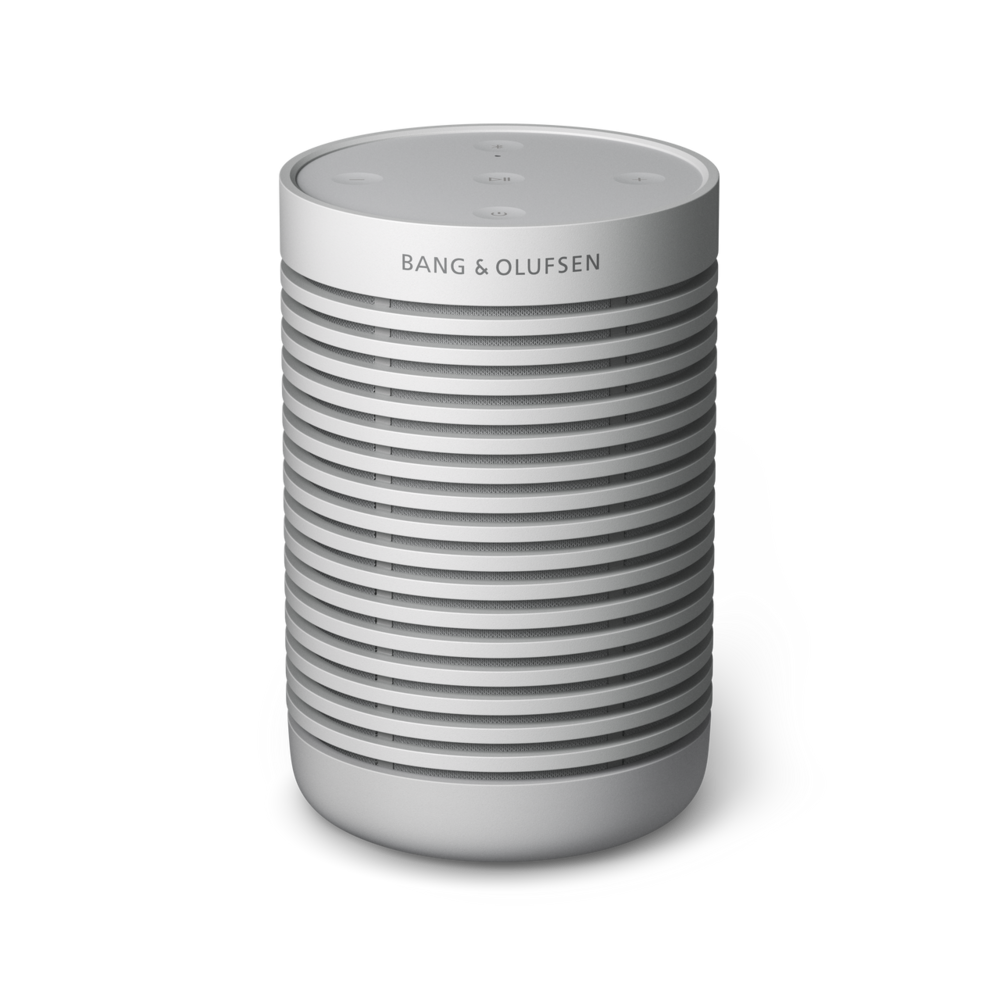Hi-Fi Hall of Fame
Business Inductee
Bang & Olufsen

How many Hi-Fi manufacturers have been in business since 1925? Not many, to be sure. But our next inductee, Bang & Olufsen, has been creating iconic audio and home entertainment products since then. The company, often known simply as “B&O”, was founded by Peter Bang and Svend Olufsen in the small town of Struer, Denmark.

Their first product, called “Eliminator”, was hardly a Hi-Fi product. It was a power supply that could be plugged into a wall (mains) outlet, and used to power a portable radio, eliminating the need for a battery. It was produced and sold throughout the 1920s and 1930s.

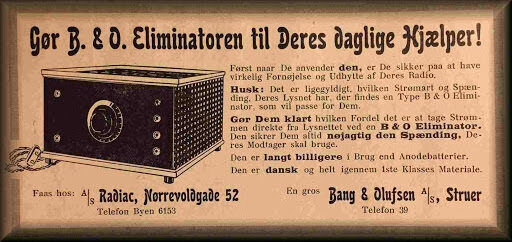

But by 1927, B&O was manufacturing their own line of radios, such as the “3 Lamper” and “5 Lamper”. These were tabletop radios that were powered by vacuum tubes. These products were successful and the company started to grow, innovate, and offer new designs.

Like many startup companies, they did not have a lot of resources. New technologies and products were developed in the attic of their parents home in a makeshift laboratory.

By 1938 the company was large enough to open their own factory, and “Bang & Olufsen” was on their way to becoming an iconic Hi-Fi manufacturer.

Key Facts
| Name | Bang & Olufsen |
|---|---|
| Founders | Peter Bang (Engineer) Svend Olufsen (Business) |
| Category | Manufacturer |
| Founded | 1925 Struer, Denmark |
Key Innovations and Products | Innovative aesthetic and industrial design Simple and effective user interface Beolit 39 radio Beogram 4000 turntable Beosound music system Beolab loudspeakers Beomaster “Commander” remote control Beocord wire and tape recorders |
| Induction to the Hi-Fi Hall of Fame | June 2023 |
| Company website | https://www.bang-olufsen.com/ |
The Bang & Olufsen Design Aesthetic
“Scandinavian design” was the name of an aesthetic trend characterized by simplicity, minimalism and functionality. Scandinavian design emerged at the beginning of the 20th century in the five Nordic countries of Denmark, Finland, Iceland, Norway and Sweden.
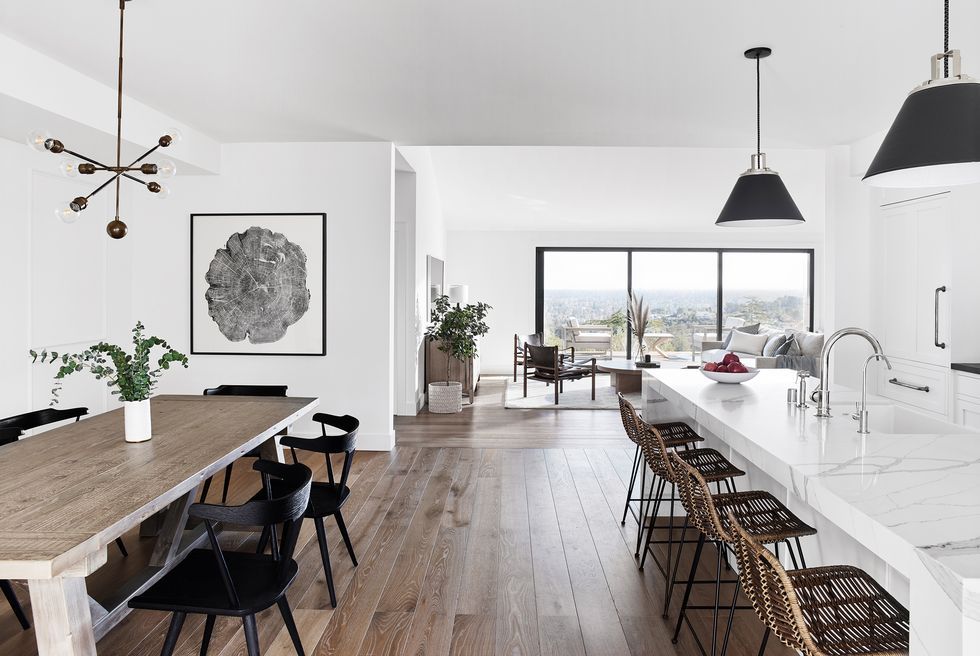
Bang & Olufsen fully embraced this design aesthetic. Their products have always been designed to be not only beautiful but also highly functional and easy to use.

Bang & Olufsen would hire talented young designers and let them create fantastic new Hi-Fi equipment. In 1957, a designer named Ib Fabiansen joined the company, and he had a strong influence on the appearance of B&O technology in the late 50s and early 60s. In the 60s, Henning Moldenhawer and Jacob Jensen joined the company. Clean lines, geometric shapes, and simplicity characterized B&O products in this era. The use of materials like wood, aluminum, and fabric created a warm and tactile feel.

In the 1970s, 1980s, and 1990s, Bang & Olufsen adopted an even more futuristic and avant-garde design language. Inspired by emerging Hi-Fi technologies and space age aesthetics, their products featured sleek, angular forms and unconventional shapes. Aluminum, glass, and plastic were popular materials, often combined to create visually striking compositions.
In the 2000s, Bang & Olufsen shifted towards a more refined and understated design approach. The emphasis was on integrating their products seamlessly into the living space. The use of soft curves, clean surfaces, and minimalist detailing became prominent. Aluminum and other high-quality materials were still utilized, but with a focus on creating a sense of timelessness.
In recent years, Bang & Olufsen has continued to evolve their design aesthetic while maintaining their core principles. Minimalism and simplicity remain key, but with a touch of organic and sculptural elements. Contrasting textures, such as smooth and matte finishes, add depth to their products. The integration of advanced technology with a human centered design approach is also a notable aspect.
Bang & Olufsen Notable Products and Innovations
Since their founding, Bang & Olufsen has created many innovative products and innovations that have left their mark on the Hi-Fi industry. Here are some of the more notable products and innovations that have come from B&O over the years.
In 1934, B&O produced a number of “Hyperbo” Radiograms. These were self contained music systems that combined a radio, gramaphone (record player), amplifier, and speaker into a single floor standing cabinet. The “RG Steel” version, pictured here, was inspired by the Bauhaus design school.
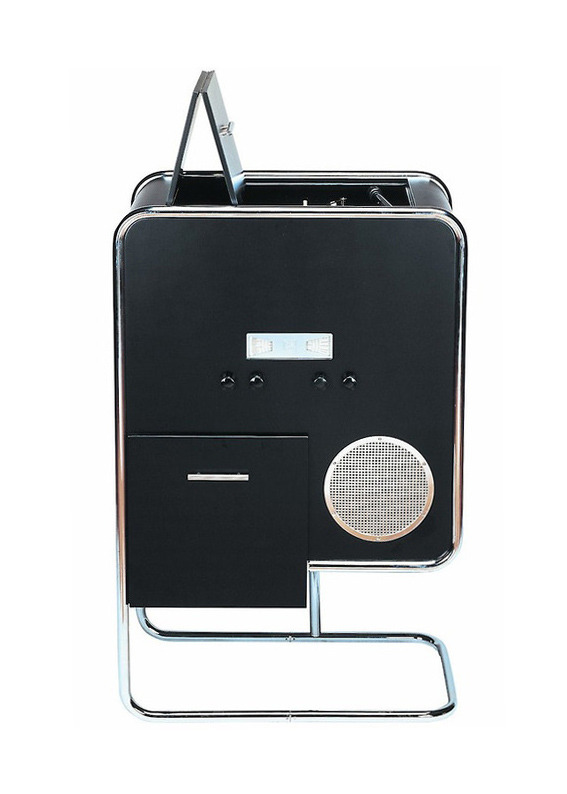
In 1938, the company introduced the world’s first push button radio receiver called the “Master 38CH”. The following year an improved version, the “Master de Luxe 39” was released with push button tuning for 16 radio stations.

The Beolit 39 radio was released in 1939 and featured a Bakelite cabinet. Using bakelite instead of a traditional wooden cabinet gave the radio a very futuristic design aesthetic. These radios are highly sought after by collectors today.
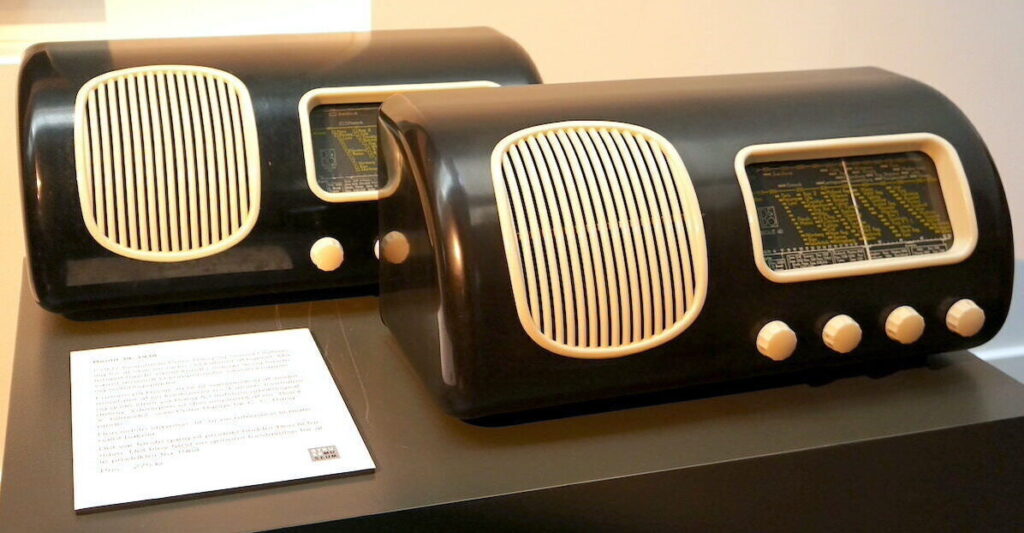
The Beocord 84u, available as early as 1940, was one of the first magnetic wire recorders for consumers in the world. It was a reel-to-reel wire tape recorder and offered high quality audio recording and playback capabilities in home audio systems.
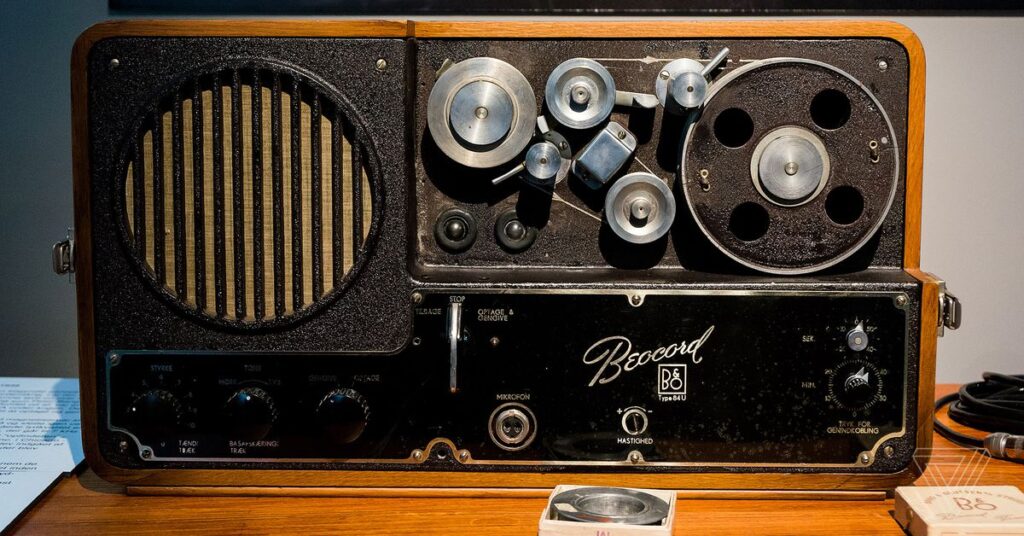
Throughout the 1940s and 1950s, B&O produced a number of “Grand Prix” tabletop radios, which combined simple design with high performance.

In the 1960s, B&O introduced innovations in their Beocord reel-to-reel tape recorders, including automatic tape threading, automatic stop, separate record and play heads, and built in mixers. Here’s a beautiful Beocord 2400 recorder from around 1969.

The Beomaster 1000 (1964) was a stereo receiver that offered advanced features and elegant design. It featured touch-sensitive tuning dials and illuminated indicators, giving it a futuristic appearance. The Beomaster 1000 also incorporated a high-quality FM tuner and built-in amplification, making it a versatile component for audio setups.

One of the first B&O models to be designed by Jacob Jensen was the Beomaster 5000 (1967). Both the FM tuner and matching “Beolab” amplifier were equipped with “slide rule” style controllers. Jensen’s works were characterized by strict minimalism and precise lines, and the materials usually used were brushed aluminum, as well as white and black plastic.
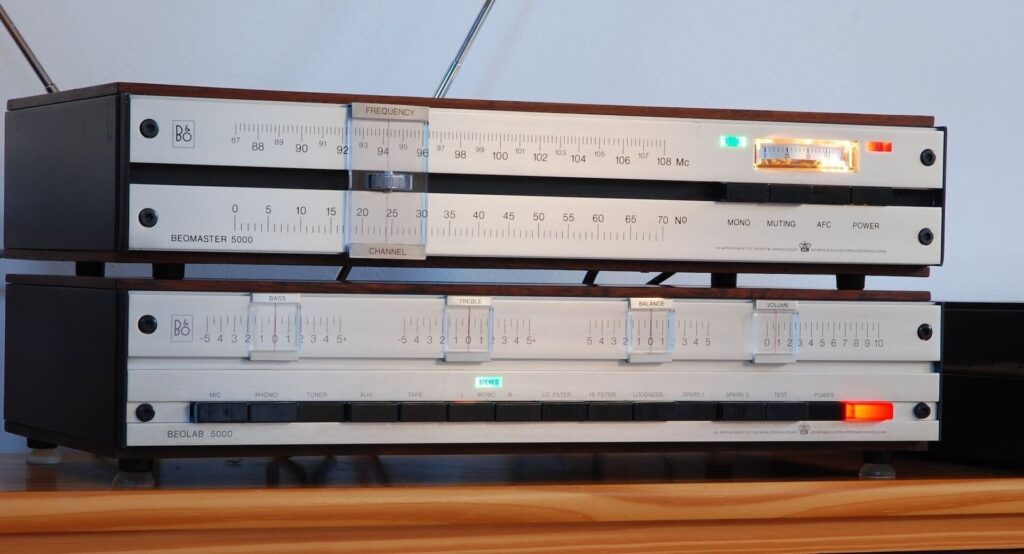
In 1972 B&O produced the stunningly beautiful Beogram 4000 turntable. The 4000 was one of the first turntables in the world to feature tangential tracking, using a straight tonearm which moved horizontally across the record surface, which allowed for more accurate playback of vinyl records.
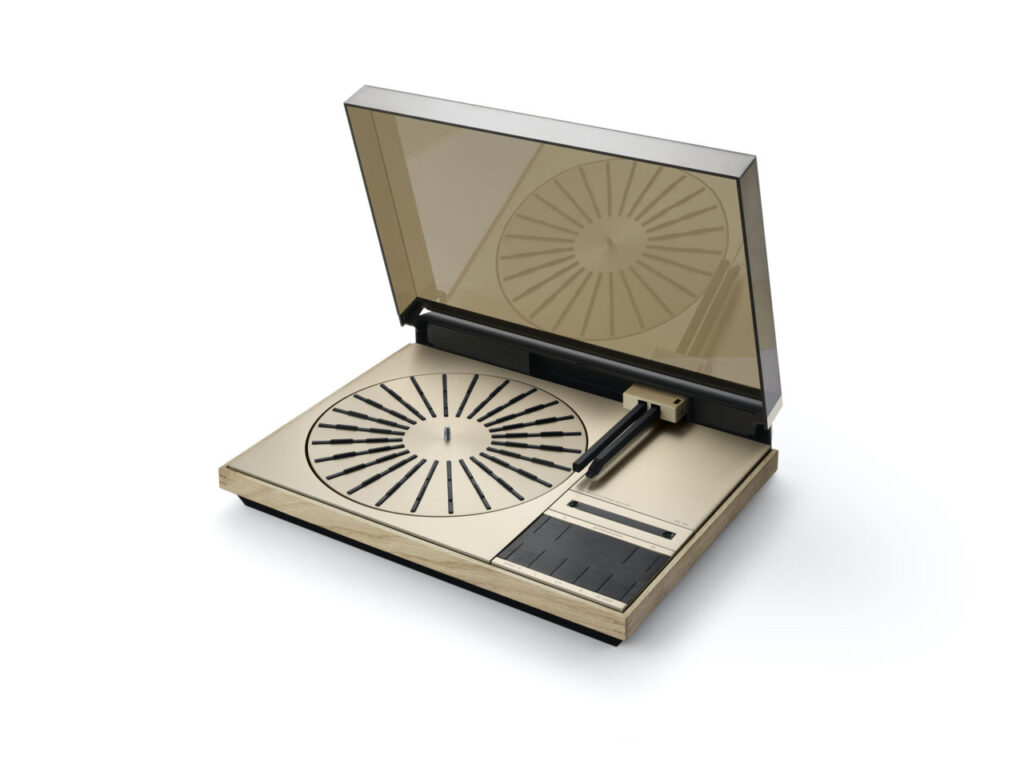
In 1974 B&O introduced a feature that we all now take for granted: the remote control! The Beomaster 6000 was the first audio product to include a remote “Commander”. It was unheard of to remotely control a Hi-Fi system and was almost considered sacrilege by some enthusiasts. But to Bang & Olufsen, the remote operation was a question of putting audio and video control into the customer’s hands.

The BeoSound 9000 music system was introduced in 1996 and was one of the first to feature a Compact Disc (CD) changer that could hold up to six discs. It had a unique design that allowed it to be mounted on a wall, and had a moving arm that would move up and down to select a disc for playback.
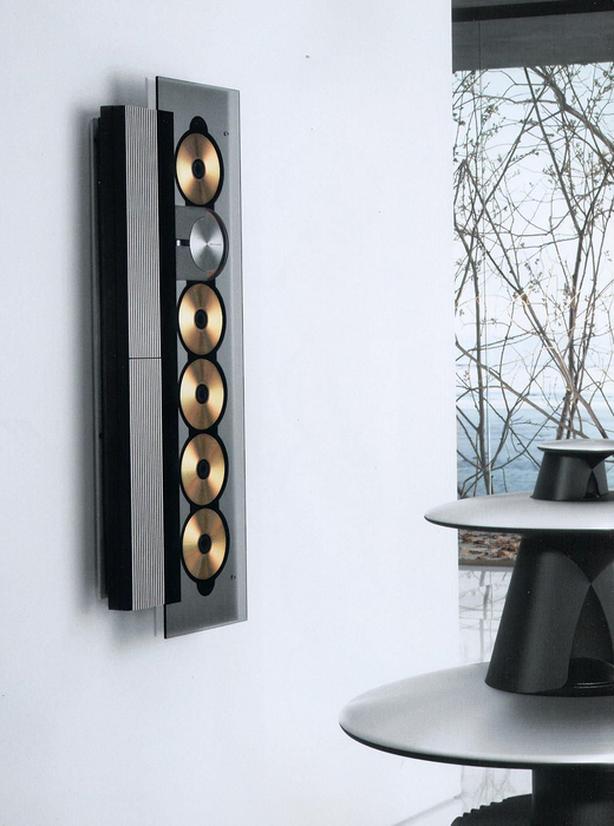
Bang & Olufsen have been making superb, powered loudspeakers for many years, so it was difficult to choose just one to feature here. One of the most remarkable looking speakers id the BeoLab 5, which were introduced in 2004. They look like sculptures, and feature a unique acoustic lens that allows for more accurate sound reproduction and dispersion.
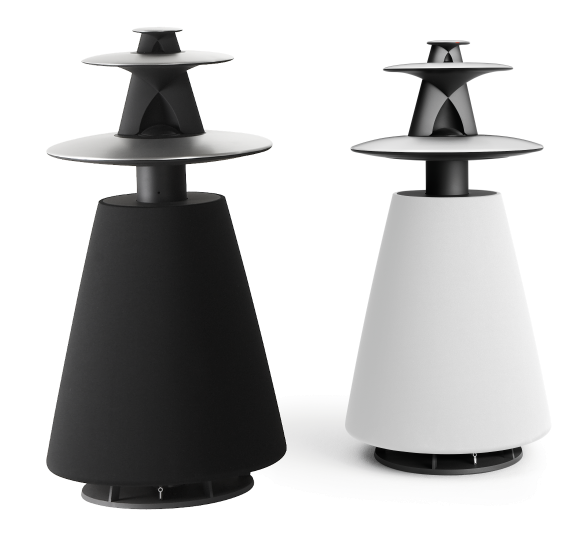
Bang & Olufsen’s Impact on the Hi-Fi Industry
Since 1925, the Bang and Olufsen brand has been known for a creativity and inventiveness that have left their mark on the Hi-Fi industry. They have manufactured a highly distinctive and exclusive range of radios, televisions, music systems, and loudspeakers that combine technological excellence with emotional appeal. Let’s look at the many ways that B&O has impacted the Hi-Fi industry.
Audio Quality
B&O has consistently prioritized delivering high-quality sound reproduction. Their commitment to audio excellence has driven them to develop advanced technologies and techniques to enhance the listening experience. B&O has continually refined its engineering and audio processing to achieve faithful and immersive sound reproduction.
Design and Aesthetics
B&O has revolutionized the aesthetics of audio equipment, challenging traditional design norms. They have infused their products with sleek lines, minimalist forms, and premium materials, setting new standards for visual appeal in the Hi-Fi industry. B&O’s designs are often considered as much works of art as they are audio equipment.
Integration of Technology
B&O has been at the forefront of incorporating cutting-edge technology into their Hi-Fi systems. They were among the first to adopt wireless connectivity, integrating features like Bluetooth and Wi-Fi into their products. B&O has also embraced smart home integration, enabling their devices to seamlessly connect and interact with other smart devices and systems.
User Experience
B&O focuses on creating user-friendly experiences, emphasizing intuitive controls and interfaces. They have developed innovative control mechanisms, such as touch-sensitive panels and remote controls with minimal buttons, to simplify the user experience and provide effortless interaction with their Hi-Fi systems.
Brand Prestige
B&O has cultivated a reputation for luxury and prestige in the Hi-Fi market. Their products are often associated with high-end audio and exceptional craftsmanship, appealing to consumers who value both audio performance and design aesthetics. B&O’s brand image has contributed to the overall perception and desirability of Hi-Fi systems.
Market Influence
B&O’s success and influence have extended beyond its own product lineup. The company’s unique approach to audio design and technology has inspired other manufacturers to push boundaries and innovate within the Hi-Fi industry. B&O’s impact can be seen in the increased emphasis on design, aesthetics, and advanced audio technologies in modern Hi-Fi systems.
Induction to the Hi-Fi Hall of Fame
For their long and successful history, their many excellent and innovative products, and their unique design aesthetic, Bang & Olufsen is inducted into the Hi-Fi Hall of Fame.
